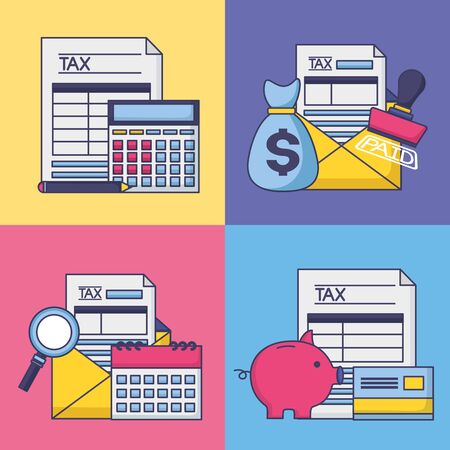Understanding Short-Term Savings Goals
When it comes to managing your money, having clear short-term savings goals can make a big difference. But what exactly counts as a short-term goal? In the U.S., most people think of short-term goals as things they want to achieve within the next year or so. These are financial targets that aren’t too far off, but still require some planning and saving.
What Qualifies as a Short-Term Goal?
| Short-Term Goal | Description |
|---|---|
| Vacation | Saving up for a trip—whether it’s a weekend getaway or an international adventure |
| Emergency Fund | Setting aside cash for unexpected expenses like car repairs or medical bills |
| New Gadget | Buying the latest smartphone, laptop, or another tech device without using credit cards |
| Holiday Gifts | Having enough saved up to buy presents for friends and family during the holiday season |
| Home Improvement Project | Budgeting for upgrades like new furniture, appliances, or DIY fixes around the house |
How to Set Realistic Targets
The key to hitting your short-term savings goals is being realistic about what you can achieve. Start by figuring out exactly how much you’ll need for your goal. Then, look at your monthly income and expenses to see how much you can set aside each month. Even small amounts add up over time.
Tips for Setting Achievable Goals:
- Be specific: Instead of just saying “I want to save money,” decide on a clear amount and purpose, like “I want to save $1,000 for a vacation.”
- Break it down: Divide your total goal by the number of months until you need the money. That gives you a monthly savings target.
- Track your progress: Use apps or spreadsheets to keep an eye on your savings so you stay motivated.
- Adjust if needed: If your budget changes, update your savings plan so it stays doable.
Why Clear Timelines Matter
A timeline helps turn your goal from an idea into something real. When you have a deadline, it’s easier to stay focused and avoid spending that money on other things. For example, if you know you want to buy holiday gifts in December, start saving in January so you’re not scrambling at the last minute. Setting a timeline also makes it easy to track whether you’re on pace or need to adjust your plan.
2. High-Yield Savings Accounts
When it comes to reaching your short-term savings goals, high-yield savings accounts are one of the best tools available. These accounts offer much higher interest rates compared to regular savings accounts at traditional banks, which means your money grows faster with minimal risk.
Why Choose a High-Yield Savings Account?
High-yield savings accounts are perfect for building an emergency fund, saving for a vacation, or stashing cash for any upcoming expenses. Since these accounts are usually offered by online banks and some credit unions, they keep overhead costs low and pass the extra earnings on to you in the form of higher interest rates.
How to Find the Best Rates
To get the most out of your savings, it’s important to shop around and compare different banks and credit unions. Look for institutions that consistently offer competitive Annual Percentage Yields (APY). Websites like Bankrate and NerdWallet regularly update lists of the top high-yield savings accounts in the U.S.
Comparison Table: High-Yield vs. Traditional Savings Accounts
| Account Type | Average APY | Minimum Balance | Monthly Fees |
|---|---|---|---|
| High-Yield Savings Account | 3.50% – 5.00% | $0 – $100 | $0 |
| Traditional Savings Account | 0.01% – 0.10% | $0 – $500 | $5 – $15 (often waived) |
Top Features to Look For
- No Monthly Fees: Make sure the account doesn’t charge maintenance fees that could eat into your interest earnings.
- Easy Online Access: Choose a bank or credit union that offers user-friendly online and mobile banking so you can track your savings anytime.
- Low Minimum Balance: Some accounts require no minimum deposit, making them accessible for everyone just starting out.
- FDIC or NCUA Insurance: Ensure your money is protected up to $250,000 per depositor in case the bank or credit union fails.
- Flexible Transfers: Look for accounts that allow easy transfers between your checking and savings so you can move funds as needed without hassle.
Quick Tips for Opening a High-Yield Savings Account
- Check if there are any requirements such as direct deposits or a certain number of transactions each month to earn the highest APY.
- Read reviews about customer service—good support makes a big difference if you ever have questions or issues with your account.
- If youre considering a credit union, make sure you’re eligible for membership based on location, employer, or other criteria.
A high-yield savings account is a safe, convenient way to make your money work harder while keeping it easily accessible for when you need it most.

3. Certificates of Deposit (CDs)
What Are Short-Term CDs?
Certificates of Deposit, or CDs, are a popular choice for savers looking for a secure way to grow their money over a set period. With short-term CDs—usually ranging from three months to one year—you deposit your money with a bank or credit union, agree not to touch it until the CD matures, and earn a fixed interest rate in return. Unlike regular savings accounts, you typically can’t withdraw your funds before the end date without paying an early withdrawal penalty.
Pros and Cons of Short-Term CDs
| Pros | Cons |
|---|---|
| Higher interest rates than most regular savings accounts | Early withdrawal penalties if you need your money before maturity |
| FDIC insured up to $250,000 per depositor, per bank | Less flexibility—funds are locked in for the term |
| No risk of losing your principal | If rates rise, your money is stuck at the original rate until maturity |
| Simple to open at most banks and credit unions | May require a minimum deposit amount |
When Should You Consider a Short-Term CD?
- You have a specific goal and timeline: If you’re saving for something within the next year—like a vacation, wedding, or moving expenses—a short-term CD keeps your funds safe and growing.
- You don’t need instant access: If you know you won’t need to dip into these savings before the term ends, you can benefit from better rates than traditional savings accounts.
- You want predictable returns: The fixed interest rate means you’ll know exactly how much you’ll earn by the end of the term.
- You want low risk: Since CDs are FDIC insured (up to federal limits), they’re one of the safest places to park your cash for short-term goals.
Quick Comparison: Short-Term CD vs. Savings Account vs. Money Market Account
| Short-Term CD | Savings Account | Money Market Account | |
|---|---|---|---|
| Access to Funds | Locked until maturity (penalties apply) | Anytime (limited withdrawals/month) | Anytime (limited withdrawals/month) |
| Interest Rates | Tend to be higher (fixed) | Lower (variable) | Slightly higher than savings (variable) |
| FDIC Insurance | Yes, up to $250K per bank/depositor | Yes, up to $250K per bank/depositor | Yes, up to $250K per bank/depositor |
| Best For… | Savers with a set goal and timeline who don’t need immediate access to funds | Savers who need flexibility and easy access at any time | Savers looking for some check-writing privileges and slightly better rates than regular savings accounts |
4. Money Market Accounts
Money market accounts (MMAs) are a popular choice for people in the U.S. who want to grow their savings while keeping money easily accessible. They combine some of the best features of savings and checking accounts, making them a great fit for short-term savings goals like building an emergency fund, saving for a vacation, or setting aside money for a big purchase.
How Money Market Accounts Work
Money market accounts are offered by most banks and credit unions. When you deposit money into an MMA, your bank uses those funds to invest in low-risk, short-term securities. In return, you usually earn a higher interest rate than you would with a standard savings account. You can typically access your funds via checks or a debit card, though there may be limits on how many withdrawals you can make each month.
Main Features of Money Market Accounts
| Feature | Money Market Account | Regular Savings Account |
|---|---|---|
| Interest Rates | Generally higher | Usually lower |
| Check Writing/Debit Card Access | Often available | Seldom available |
| Minimum Balance Requirement | May require higher minimums (often $1,000+) | Lower minimums ($25–$100) |
| Withdrawal Limits* | Up to 6 per month (per federal regulation) | Up to 6 per month (per federal regulation) |
| FDIC/NCUA Insurance | Yes, up to $250,000 per depositor, per institution | Yes, up to $250,000 per depositor, per institution |
*Note: Due to recent changes in federal regulations, some banks may allow more than six withdrawals per month.
Why Choose a Money Market Account for Short-Term Savings?
- Bigger returns: MMAs often offer better rates than regular savings accounts, so your money can grow faster.
- Easy access: You can quickly transfer or withdraw funds when needed—ideal if you might need cash in a pinch.
- Safety: Your deposits are insured up to $250,000 by the FDIC (banks) or NCUA (credit unions).
- Simplicity: No complicated investment strategies—just park your cash and let it earn interest.
What Sets Money Market Accounts Apart?
The main thing that sets MMAs apart from regular savings accounts is their blend of higher yields and flexible access. While they may have higher minimum balance requirements, the added benefits—like check-writing capabilities and better interest rates—make them especially attractive for those looking to reach short-term financial goals without locking away their money.
5. Digital Tools and Apps for Goal Tracking
When it comes to reaching your short-term savings goals, using the right digital tools can make the process smoother and even fun. In the U.S., there are several popular apps and platforms designed to help you automate your savings, create dedicated savings buckets, and keep track of your progress every step of the way.
Popular Apps for Automating Savings
Automation is a game changer in saving money. With just a few taps, you can set up recurring transfers from your checking account to your savings or let technology round up your purchases and save the difference. Here are some top-rated apps:
| App Name | Key Features | Best For |
|---|---|---|
| Chime | Automatic round-ups, Save When You Get Paid feature, fee-free banking | Simple automated savings |
| Digit | Saves small amounts daily based on spending habits, goal tracking, automatic transfers | Hands-off savers |
| Qapital | Savings rules (e.g., roundup, guilty pleasure), personalized goals, joint accounts | Goal-based savings with flexibility |
| Acorns | Round-up investing, retirement options, found money from brands | Savers who want to invest spare change |
Setting Up Savings Buckets
Banks and fintech apps now let you create multiple “buckets” or “envelopes” within one savings account. This makes it easy to organize your money for different short-term goals like vacations, emergency funds, or big-ticket purchases.
Banks Offering Savings Buckets:
- Ally Bank: Allows up to 10 buckets within one account for separate goals.
- Capital One 360: Lets you open multiple labeled sub-accounts for each goal.
- Sofi Money: Offers Vaults to help separate and track specific objectives.
Tracking Progress Toward Your Goals
The best apps offer visual dashboards so you always know how close you are to hitting your target. Many will send notifications when you’re making good progress—or reminders if you’re falling behind. Some helpful features include:
- Progress bars: Visually see how much youve saved compared to your goal.
- Reminders: Get nudges to make deposits or celebrate milestones.
- Spending analysis: See where your money is going and find ways to save more.
A Quick Comparison of Goal-Tracking Features
| App/Bank | Savings Buckets/Goals? | Progress Tracking? | Automated Savings? |
|---|---|---|---|
| Chime | No buckets, but simple automation | No visual dashboard | Yes |
| Ally Bank | Buckets for multiple goals | Yes, with visuals and labels | No automation built-in (manual transfers) |
| Qapital | Create unlimited goals/buckets | Yes, highly visual app interface | Yes, via rules and automation options |
| Sofi Money | “Vaults” for organizing savings goals | Basic goal tracking features | No built-in automation (manual moves) |
Your Next Steps:
If youre serious about crushing your short-term savings targets, pick an app or digital bank that fits your style—whether you want total automation or more hands-on control. The right tool can make saving feel effortless and help keep you motivated along the way.

